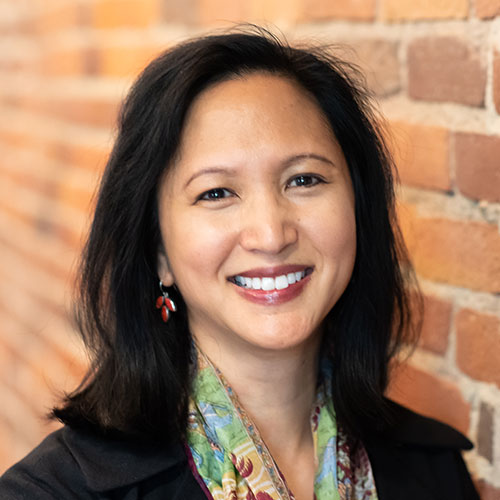Cultivating a Culture of Belonging in Science
By Maria Ong, Ph.D.
Posted on 2024-07-29

Disclaimer: The views expressed in this blog post are those of the author(s) and do not necessarily reflect the official position of the National Science Teaching Association (NSTA).
Despite ongoing efforts to attract and retain students belonging to marginalized groups, including women of color, in STEM disciplines such as engineering, computer science, and physics, the numbers continue to fall severely short. According to the National Science Foundation (2023), women comprise just less than 25% of bachelor’s degree earners in these fields, while women of color make up less than 6%. One major reason for the shortfall is that recruitment and retention efforts are often rooted in deficit models that seek to “fix” these students—for example by providing tutoring or teaching them “self-confidence”— rather than addressing the systemic, inequitable practices and culture that repel many of these students in the first place.
For more than 25 years, I followed the educational and career paths of 10 women of color pursuing degrees in physics and physics-related fields. All 10 earned bachelor’s degrees in their chosen fields, and seven went on to earn PhDs in physics. My book, The Double Bind in Physics Education: Intersectionality, Equity, and Belonging for Women of Color (Harvard Education Press 2023), explores how—despite being passionate about learning and demonstrating academic proficiency—these women frequently reported being ignored or harassed, denied recognition for STEM knowledge or achievements, subjected to low expectations, and struggling with school- and work-life balance. Yet these women of color persisted, engaging, for example, in personal navigation strategies and participating in departmental, campus, and national support offerings such as STEM student support groups. It’s time for STEM departments themselves to cultivate systemic change and a strong sense of belonging for underrepresented students. Here are some steps they can take to accomplish that.
- Acknowledge that STEM has a culture. STEM spaces are neither neutral nor objective. STEM departments can conduct self-studies (for example, departmental surveys) or hold conversations about local cultural practices and expectations.
- Hold accountable those who commit identity‐based harassment. According to a report by the ARC Network, a STEM equity brain trust, identity-based harassment serves to denigrate people based on their membership in certain socio-demographic categories such as race, ethnicity, gender, sexuality, socioeconomic standing, and dis/ability status. STEM spaces should be places where women of color and others feel confident and safe while they learn. Accountability can be informal (e.g., an instructor confronting the harasser about their actions) and/or built into departmental policies.
- Listen to women of color and other marginalized students. The stories of their experiences will illuminate both systemic barriers and supports, and pinpoint areas that need reform.
- Provide funding and support to women of color to participate in identity‐based counterspaces. Counterspaces in STEM are safe spaces where individuals who are underrepresented in STEM can promote their own learning, have their experiences and knowledge validated, and vent frustrations. Strong on-campus mentoring relationships and STEM peer groups, as well as funding and approval to attend conferences like those hosted by the Society for the Advancement of Chicanos/Hispanics and Native Americans in Science, Out in STEM, and the National Society of Black Physicists, are invaluable for providing a sense of belonging in science and supporting students’ persistence.
- Make room for whole selves inside science spaces. Rather than falsely claiming objectivity through gender- and race-blindness, members of STEM departments should acknowledge and embrace their cultural differences. Differences have been shown to be sources of insight, inspiration, and rigor for scientific problem solving.
- Broaden the definition of success in science. The prevailing definition of success in science is an academic research career, but this choice often involves engaging in cutthroat competition, working nonstop, accepting lower-paying roles, and making draconian sacrifices to work-life balance. Students also should be exposed to alternative paths to success in science such as working at a national laboratory or in industry, teaching in STEM fields at a small college, or working in other roles that support science learning, like STEM administration or curriculum development.
Stakeholders invested in issues of equity, innovation, and excellence in STEM—including educators, administrators, employers, and funders—should advocate for systemic reform through the cultural dynamics of STEM settings. Such reform will lead to STEM cultures being more inviting and inclusive for women of color and others who belong to groups marginalized in STEM. These changes, aimed at creating a robust culture of belonging, also will contribute greatly to gains and growth for the entire STEM enterprise.

Maria (Mia) Ong, Ph.D., is the author of the groundbreaking book The Double Bind in Physics Education (Harvard Education Press). She is a Senior Research Scientist and Evaluator at TERC, a not-for-profit focused on STEM teaching. She is the Founder and Director of Project SEED (Science and Engineering Equity and Diversity), a social justice collaborative. Ong's work has appeared in reports to the U.S. Congress, the U.S. Supreme Court, and in journals such as Social Problems and Harvard Educational Review, and she was an invited speaker at the 2016 White House meeting on inclusive education in STEM.


